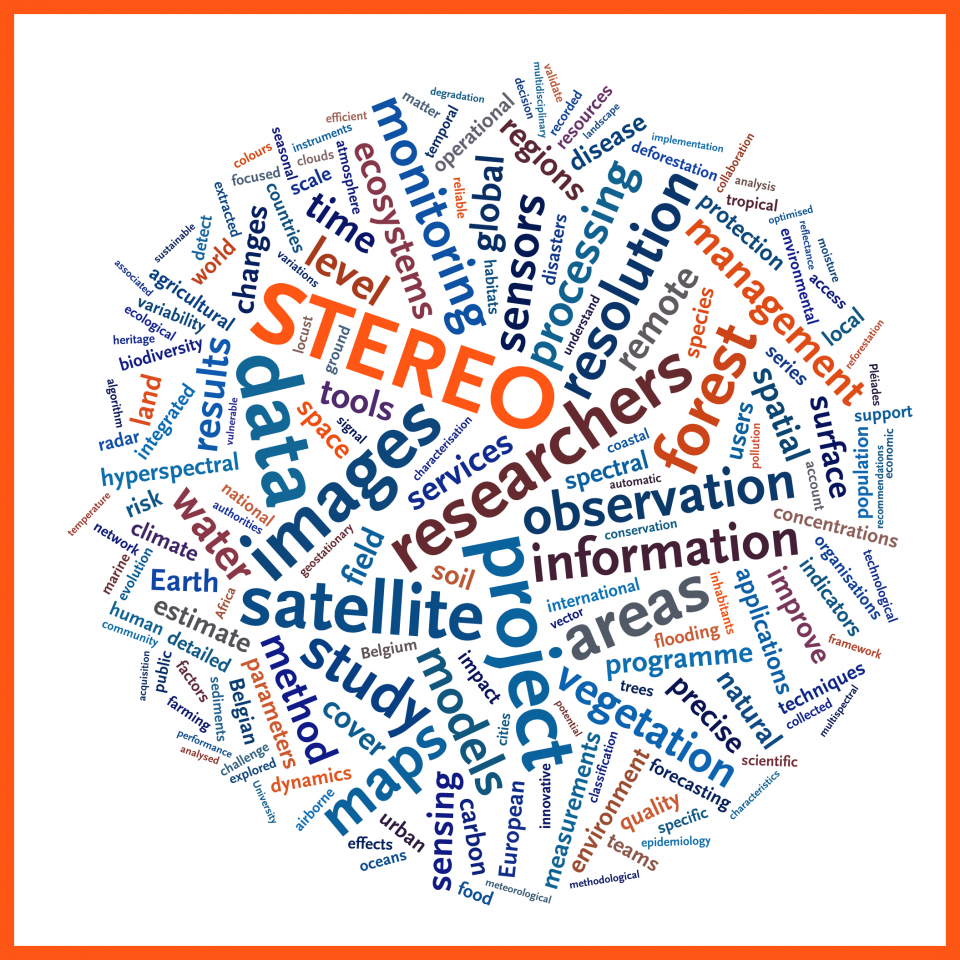Belgium's support to the development of remote sensing technology has always been carried out via European Space Agency (ESA) and bilateral programmes. Development of applications and support of scientific use of remote sensing data, however, have been taken care of through a range of dedicated national remote sensing research programmes which started in 1985.
A Belgian remote sensing research capacity
The very first programme, TELSAT 1, aimed at creating a national remote sensing research capacity and exploring the possibilities of SPOT imagery for agriculture, forestry and cartography. Throughout the years and through the consecutive programmes, the aim was broadened to the development of applications, interaction with users, transfer of knowledge to industry and public administrations, international visibility of research results and training and education.
Now, halfway through the STEREO III programme, Belgium is home to a vibrant remote sensing research community with over 20 remote sensing laboratories active in technical areas such as data analysis and processing and a wide range of thematic areas : agriculture, atmospheric pollution, coastal protection, epidemiology, forest management, polar studies, risk management, urban dynamics, vegetation monitoring, water quality...
This research landscape is strongly complemented by a bevy of small and medium-sized nimble companies, whose domain of activities span from applications development to data processing, sensors design and platforms development.
The Belgian landscape around STEREO
This website is an initiative of the STEREO III programme, our national remote sensing flagship research programme. Of course, this is far from the only remote sensing activity Belgium is involved in.
The research landscape is strongly complemented by a bevy of small and medium-sized nimble companies, whose domain of activities span from applications development to data processing and distribution, sensors design, platforms development and mission operation. In addition, other initiatives at federal or federated entities levels allow funding of research related to remote sensing.
